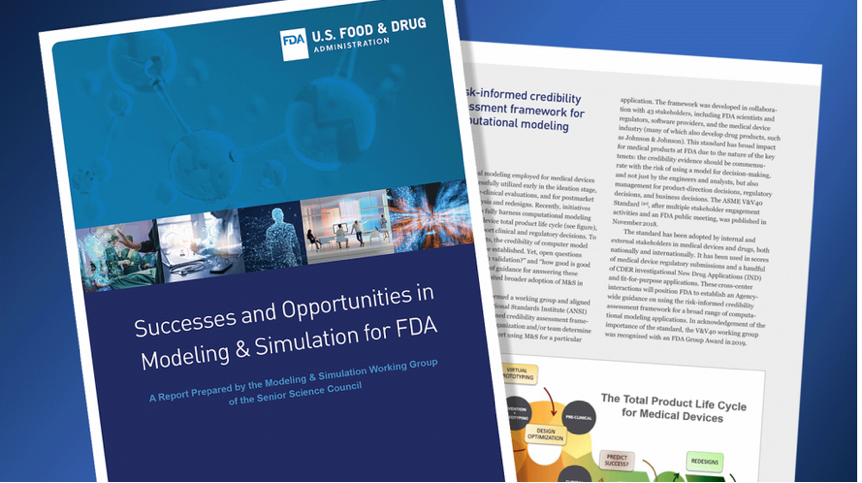In the last decade, Modeling and Simulation have become firmly established as a regulatory science priority at FDA, which has coincided with the explosive growth in data science and model-based technologies.
In the latest “Successes and Opportunities in Modeling & Simulation for FDA” – a report prepared by the modeling & simulation working group of the Senior Science Council – the authors stated that one of the many opportunities for the Agency in M&S “is to accelerate the use of modeling in the product development and premarket review stages, where appropriate, in Centers or applications where it is not well established. This may deliver substantial public health impact, and lessons learned in establishing reliable M&S approaches for these stages may enable rapid M&S solutions to be developed for other regulatory problems.”

This leads to the first core point of the article: “The lack of Good Simulation Practices guidelines may be one of the limiting factors for broader use and acceptance of M&S. Creating these guidelines is a key opportunity for the Agency to have an important leadership role.”
On the other hand, opportunities that could directly support FDA scientists have been identified. The first one “is to strengthen internal networks for sharing resources and modeling techniques (e.g., model building, validation, and application), to host training sessions to enhance hands-on experience with these resources, techniques and relevant software platforms, and to promote better understanding and harmonization amongst FDA stakeholders.”
The second opportunity is to “consider the establishment of Good Simulation Practice to foster harmonization across the FDA, and where appropriate, with international regulatory bodies.”
“Establishing best practice and quality control principles to ensure more harmonized standards for model development, model use and validation, would strengthen our current modeling and simulation practices. It is also critical to develop a common set of expectations or guidelines for model verification, validation, credibility assessment, and maintenance between industry and regulators, as well as between regulatory scientists/modelers and reviewers within the FDA.”
The practice of In Silico Trials is still far from being established. Most of the research so far has been conducted in academic laboratories and thus far from the needs of industrial users. This is why the In Silico World community – in collaboration with the Avicenna Alliance – works to consolidate a set of industrial practices that make the development and use of In Silico Trials solutions easier and more reliable.
Read the full FDA article here





